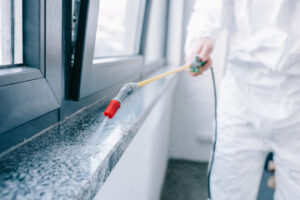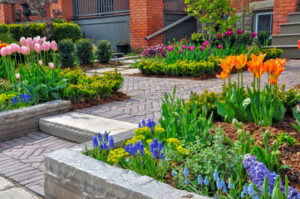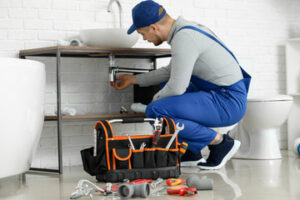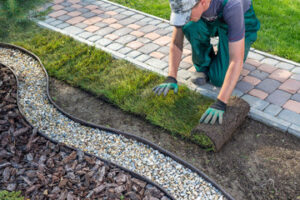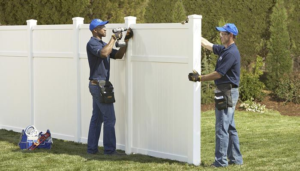Whether it’s a car accident, medical malpractice, or slip and fall injury, an experienced personal injury attorney can guide you through the legal process. They can also help you recover financial compensation for your losses.

Experienced lawyers understand that insurance companies often undervalue claims and offer settlements that don’t adequately compensate the injured party for their losses. Let Personal Injury Solicitor Bristol provide the expert help you need.
A personal injury lawyer is a legal professional who assists people with injury claims due to another party’s negligence. They can help with investigations, preparing court filings and settlement negotiations, as well as conducting factual, medical and legal research. Their primary objective is to ensure that victims receive the rightful compensation for their losses.
A good lawyer will build a strong case with a comprehensive arsenal of evidence. This can include medical records that showcase the extent of a client’s injuries, witness statements that shed light on accident circumstances, and physical proof such as photographs and videos. This type of evidence helps to establish causation, which is an important element in a personal injury claim.
When choosing a personal injury attorney, it’s important to look for one with a track record of success. The best lawyers have a proven record of winning cases for their clients, and they will be able to provide you with references that can attest to their skills and ability. Additionally, a good lawyer should be up-to-date on the latest civil laws and regulations related to personal injury cases.
During the first consultation, it’s also important to evaluate the attorney’s office environment. Look for a clean, organized office that reflects the attorney’s level of professionalism and competency. Also, make sure to ask the attorney about their fee structure and how they handle fees associated with a personal injury case.
An experienced personal injury attorney should be able to explain the different types of damages available in a personal injury lawsuit. Generally, damages are categorized as economic (tangible) and non-economic (intangible). Economic damages can include lost income, medical expenses, and property damage. Non-economic damages can include pain and suffering, mental distress, and loss of enjoyment of life. An experienced personal injury attorney will be able to accurately assess the value of your claim and negotiate with insurance companies for a fair settlement. They will also be able to guide you through the often complicated process of filing a civil lawsuit. They will ensure that all deadlines are met and that necessary paperwork is submitted properly.
Medical Malpractice Lawyers
A medical malpractice claim is a personal injury case that involves medical errors. These errors can result in serious physical and emotional damage. It is important to work with a lawyer who has experience handling these cases. It is also important to find a lawyer who has a good track record of winning cases. In addition, you should ask about the lawyer’s fees. Most personal injury lawyers work on a contingency basis, so they only get paid if they win their client’s case.
A personal injury attorney is a legal expert in the area of accident and injury law. They specialize in representing victims of injuries caused by the negligence of another party, such as a car crash or medical malpractice. They can help you pursue compensation from the responsible parties and their insurance companies. They can also handle other types of claims, such as product liability and wrongful death.
While the majority of personal injury cases are settled out of court, a few cases will go to trial. When this happens, the personal injury lawyer will prepare the case for trial and argue it on your behalf. They can also assist with finding expert witnesses to testify on your behalf. This step is critical in proving your claim.
Medical malpractice is when a doctor or other health care professional causes an injury to their patient due to negligence or carelessness. These injuries can be extremely devastating to a patient and their families, and they often have long-term consequences. These injuries may require life-long medical treatment, rehabilitation, or even nursing care. In addition, they can prevent a victim from returning to work in the same capacity as before or at all.
One of the most difficult aspects of pursuing a medical malpractice case is proving that a health care provider violated the standard of care. This is a complex task, and it requires the assistance of a medical malpractice lawyer. It is important to act quickly because each state has a statute of limitations for filing lawsuits.
In some cases, a victim may be awarded punitive damages in addition to their compensatory award. This is intended to punish the defendant for his or her egregious actions and send a message that this type of behavior will not be tolerated.
Product Liability Lawyers
Many personal injury cases involve injuries caused by defective products. In these situations, it is critical for injury victims to seek the insightful counsel of a skilled product liability lawyer. Product liability law details the set of legal rules describing who is responsible for dangerous and defective products that harm people. Often, companies that produce faulty products fail to include safety features or adequate warnings. The result is that people are injured or killed when using these products. When this happens, victims can file a lawsuit against the company.
There are many different types of defective product claims. A common claim involves a defective medication. In this situation, the victim may be able to sue the manufacturer of the drug or the pharmacy that filled it. Other examples of a defective product lawsuit include products that are faulty in their design, manufacturing or assembly. In these types of claims, a victim can pursue a legal claim against the product’s designer, manufacturer or distributor.
The laws allow a person who has been hurt or the family of a deceased individual to file a lawsuit against the manufacturers and distributors of a dangerous product. In this type of case, the plaintiff is able to obtain compensation for their injuries and other damages. However, pursuing a product liability lawsuit can be difficult. This is because the victims must fight against deep-pocketed corporations and their insurance companies that are trying to limit the amount of money they pay to injury victims.
An experienced lawyer can help injured people win their claims against these corporations and receive the maximum compensation possible for their losses. A good lawyer will focus on several areas, including a thorough investigation of the accident and the collection of evidence. This evidence can include receipts, medical records and any documentation of the injury or loss. The lawyer will also be able to help the victim negotiate with the insurance company for the best settlement possible.
It is not uncommon for a person to be harmed by a product that was made in another country. This is because most consumer products are manufactured in foreign countries. However, the states subsidiary of a foreign corporation is still likely to be held liable for the injuries that are caused by these products.
Car Accident Lawyers
Car accidents can lead to a wide variety of losses, including damages for medical bills, property damage, lost wages, and pain and suffering. Depending on the severity of your injuries, a skilled car accident lawyer may be able to help you recover these damages.
It is important to seek immediate medical attention after a car accident, even if your injuries seem minor at first. Your doctor will be able to evaluate your injuries and provide valuable information for a car accident claim or lawsuit. Ideally, you should also secure copies of all relevant medical documentation related to your injury. It is a good idea to have these documents, along with police reports, photos and witness statements ready when you meet with an attorney to discuss your case.
When building a car accident claim, it is important to account for all of your losses. This includes not only financial costs, such as medical expenses and the cost of replacing lost items, but also intangible losses, such as the loss of a sense of security or meaning in life. Your attorney will be able to help you place a value on these losses so that you can receive adequate compensation.
A reputable car accident attorney will have an established track record and reputation in the community. This can be beneficial when it comes time to negotiate a settlement or pursue litigation in court, as opposing parties and judges will be more familiar with attorneys from well-known firms. In addition, a firm with an extensive network of professional connections will have access to specialized resources that may benefit your case.
A car accident lawyer will act as a mediator between victims and insurance companies, helping ensure that your rights are protected throughout the process. They can also handle all communications with the insurance company, taking the pressure off of you to deal with difficult questions and conversations. They will also be able to assess the validity of any insurance company claims, as well as help you identify additional sources of recovery for your losses.

